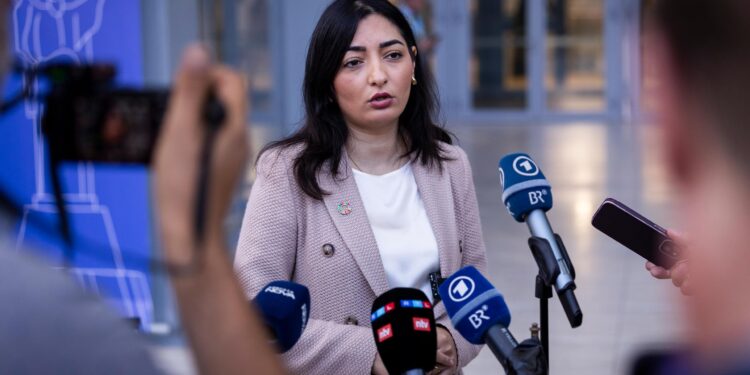Ukraine has undertaken a significant cabinet reshuffle amid mounting challenges as its wartime economy grapples with mounting pressures. The government’s latest move aims to address shortcomings in economic management and streamline efforts to stabilize the nation’s finances during ongoing conflict. As Kyiv faces both external threats and internal fiscal strain, the reshuffle reflects a strategic attempt to bolster economic resilience and sustain critical operations under extraordinarily difficult circumstances.
Ukraine Cabinet Reshuffle Targets Economic Stabilization Amid Ongoing Conflict
In a decisive move to counter mounting economic pressures exacerbated by the ongoing conflict, Ukraine’s government has restructured key cabinet positions to prioritize fiscal resilience and recovery. The shakeup places seasoned economic experts in pivotal roles, signaling a shift towards more aggressive reforms and enhanced coordination with international financial institutions. Officials have underscored the urgency of stabilizing currency fluctuations, controlling inflation, and restoring critical supply chains disrupted by hostilities.
Among the immediate objectives highlighted by the new cabinet are:
- Streamlining public expenditure to ensure sustainable budgeting amid wartime demands
- Strengthening energy security through diversified imports and domestic production
- Accelerating reforms to attract foreign investment despite geopolitical risks
With external aid commitments under scrutiny and the domestic market facing unprecedented uncertainty, the reshuffle aims to balance wartime exigencies with long-term economic stability. Analysts warn that success will heavily depend on the cabinet’s ability to swiftly implement reforms while maintaining public trust.
| Key Position | New Appointee | Focus Area |
|---|---|---|
| Minister of Finance | Olena Kovalchuk | Budget Reform & Inflation Control |
| Energy Minister | Viktor Malenko | Energy Security & Diversification |
| Minister for Economic Development | Serhiy Taran | Investment & Industrial Revival |
Challenges Facing Ukraine’s Wartime Economy and Implications for Recovery
Amid ongoing conflict, Ukraine’s economy is grappling with severe disruptions that extend well beyond the battlefield. Industrial output has plummeted, critical supply chains have fractured, and inflationary pressures continue to mount, placing immense strain on both public finances and civilian livelihoods. Energy shortages, damaged infrastructure, and a rapidly depreciating currency compound the challenges, forcing the government to implement emergency fiscal measures while seeking increased international financial support. The reshuffling of the cabinet underscores the urgent need for fresh strategies to stabilize the economy and coordinate recovery efforts.
Key obstacles driving the economic downturn include:
- Displacement of millions affecting labor availability and domestic consumption.
- Collapse of key export routes disrupting trade flows and reducing foreign currency earnings.
- Deteriorating investor confidence leading to capital flight and shrinking private sector activity.
- Rising defense expenditures diverting funds from social and development programs.
| Economic Indicator | Pre-War Level | Current Estimate |
|---|---|---|
| Industrial Output | 100% | 60% |
| GDP Growth | 3.5% | -30% |
| Inflation Rate | 7% | 22% |
| Unemployment | 8% | 15% |
The road to recovery will require not only rebuilding physical assets but also restoring investor trust and reviving productive capacity in tandem with humanitarian aid and reconstruction funding. Officials emphasize the importance of international cooperation to expedite reconstruction and economic revitalization, warning that without cohesive policy implementation, the repercussions of the wartime economic collapse could endure long after active hostilities cease.
Expert Recommendations for Strengthening Ukraine’s Fiscal Resilience During Crisis
Amid mounting economic pressures, financial experts emphasize the urgent need for Ukraine to adopt a multi-pronged approach that simultaneously addresses immediate liquidity concerns while laying foundations for long-term fiscal stability. Prioritizing transparent public expenditure, strengthening tax collection mechanisms, and minimizing corruption are critical steps. International cooperation and leveraging emergency funding from allied nations and institutions can provide a vital buffer, but Ukraine must also enhance domestic revenue mobilization to reduce dependence on external assistance.
Key strategies include:
- Implementing targeted fiscal stimulus focused on sustaining essential services
- Reforming tax policies to broaden the base and improve compliance
- Optimizing public procurement processes to ensure cost efficiency
- Enhancing data-driven budget monitoring for real-time crisis response
| Measure | Short-Term Impact | Long-Term Benefit |
|---|---|---|
| Tax base expansion | Increased immediate revenues | Sustainable fiscal health |
| Public expenditure transparency | Improved donor confidence | Reduced corruption risks |
| Emergency international funding | Liquidity stabilization | Bridging recovery phases |
Closing Remarks
As Ukraine navigates the immense challenges of sustaining its wartime economy, the recent cabinet reshuffle underscores the government’s urgency to bolster economic management and resilience. With the conflict continuing to strain resources and stability, the effectiveness of these new appointments will be closely watched both domestically and by international observers. Ultimately, Ukraine’s ability to adapt its economic strategies amid ongoing turmoil remains critical to its long-term recovery and defense efforts.










